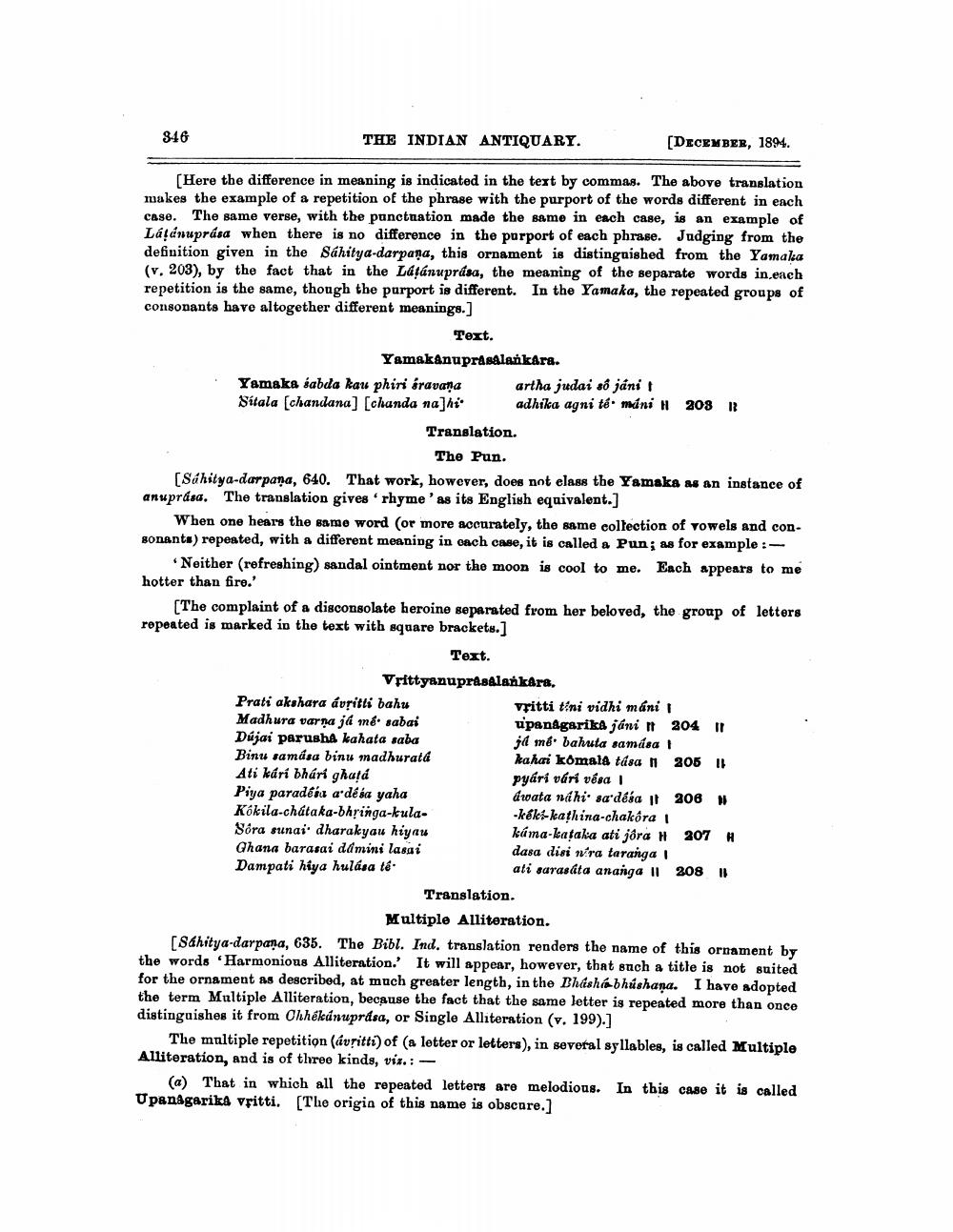________________
346
THE INDIAN ANTIQUARY.
(DECEMBER, 1894.
Here the difference in meaning is indicated in the text by commas. The above translation makes the example of a repetition of the phrase with the purport of the words different in each case. The same verse, with the punctuation made the same in each case, is an example of Láténuprása when there is no difference in the porport of each phrase. Judging from the definition given in the Sahitya-darpana, this ornament is distinguished from the Yamala (v. 203), by the fact that in the Laţánuprása, the meaning of the separate words in each repetition is the same, though the purport is different. In the Yamaka, the repeated groups of consonants have altogether different meanings.]
Text.
Yamakanuprasalankara. Yamaka sabda kau phiri Sravana artha judai só jánit Sitala [chandana] [chanda na]hi adhika agni té máni H 208 R
Translation.
The Pun. [Sahitya-darpana, 640. That work, however, does not class the Yamaka as an instance of anuprása. The translation gives rhyme'as its English equivalent.]
When one hears the same word (or more accurately, the same collection of vowels and conBonanta) repeated, with a different meaning in each case, it is called a Pun; as for example :
Neither (refreshing) sandal ointment nor the moon is cool to me. Each appears to me hotter than fire.'
The complaint of a disconsolate heroine separated from her beloved, the group of letters ropoated is marked in the text with square brackets.]
Text.
Vfittyanuprasalankara, Prati akshara ávşitli bahu
vritti tini vidhi máni Madhura varna já mê sabai
u panagarika jani 204 Dújai parusha kahata saba
jd mé bahuta samása! Binu samása binu madhurata
kahai komals tása 11 205 ! Ali kárí bhári ghatá
Pyári vári vésa Piya paradéra a desa yaha
dwata nchi' sa désa it 206 # Kókila-chátaka-bhringa-kula
-kelet-kathina-chakóra Sora sunai' dharakyau hiyau
káma-kataka ati jóra H 207 H Ghana barasai damini lasai
dasa disi wra taranga Dampati hiya hulása té.
ati sarasata ananga || 208 Translation.
Multiple Alliteration. [Sahitya-darpana, 635. The Bibl. Ind. translation renders the name of this ornament by the words 'Harmonious Alliteration. It will appear, however, that such a title is not suited for the ornament as described, at much greater length, in the Dhashábhúshana. I have adopted the term Multiple Alliteration, because the fact that the same letter is repeated more than once distinguishes it from Ohhékánuprása, or Single Alliteration (v. 199).]
The multiple repetition (avritti) of (a letter or letters), in several syllables, is called Multiple Alliteration, and is of three kinds, vir: -
(a) That in which all the repeated letters are melodious. In this case it is called Upanagariks vritti. [The origin of this name is obscure.]




